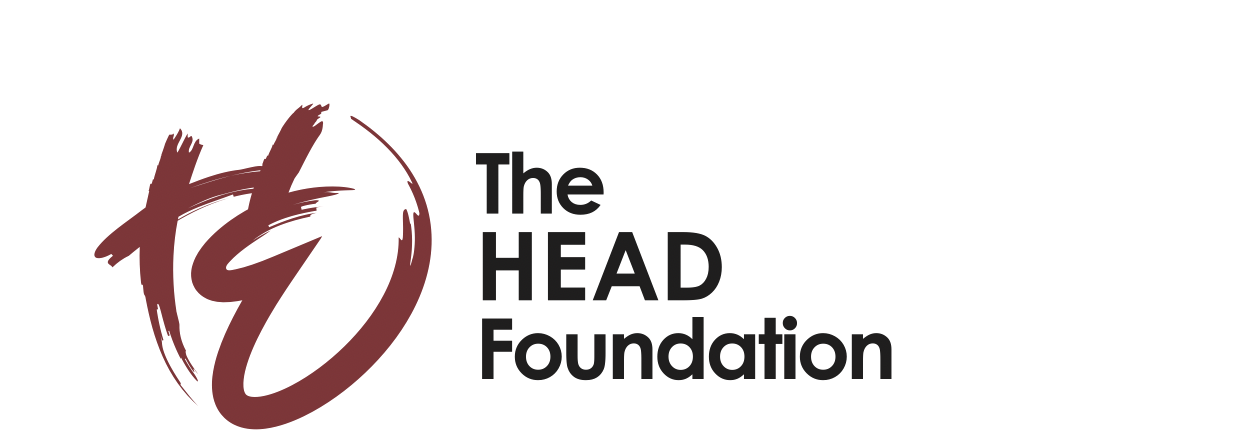Digital connectivity has fundamentally reshaped workplace expectations, contributed to widespread employee burnout, and challenged traditional human resources practices. Born in the early 1980s, I have witnessed technology’s evolution from dial-up internet speeds of 28–56 kilobits per second to today’s gigabit connections — a transformation that represents not merely technical progress but a fundamental shift in how we work, communicate, and manage professional boundaries.
While the COVID-19 pandemic accelerated technological adoption and demonstrated the viability of remote work, it also intensified an “always-on”- culture that blurs the distinction between professional and personal time. This technological revolution, though enabling unprecedented efficiency and global connectivity, has introduced new challenges for employee well-being and organisational management.
This article examines three critical dimensions of this transformation: how digital culture has reshaped workplace expectations, the mechanisms by which constant connectivity contributes to burnout and disengagement, and the implications for HR practices and workplace policies in addressing these emerging challenges.
While the COVID-19 pandemic accelerated technological adoption and demonstrated the viability of remote work, it also intensified an “always-on” culture that blurs the distinction between professional and personal time.
HOW DIGITAL CULTURE RESHAPED EXPECTATIONS
The proliferation of social media platforms and instant communication tools has fundamentally altered professional expectations by creating curated images of success that bear little resemblance to the realities of the workplace. Originally designed to connect like-minded individuals and maintain relationships, these platforms have inadvertently established unrealistic benchmarks for professional achievement and work-life integration.
Social media’s emphasis on showcasing idealised versions of ourselves — highlighting achievements, travels, and insights while concealing struggles and setbacks — has conditioned employees to expect similarly polished professional experiences. This phenomenon creates what researchers term “compare and despair” cycles,1 where individuals measure their behind-the-scenes reality against others’ highlight reels.
The psychological impact extends beyond individual self-perception. Employees increasingly expect their workplaces to provide the same seamless, immediately rewarding experiences they encounter on social media. When organisations fail to meet these digitally influenced expectations, it contributes to reduced motivation and engagement.
In recruitment and talent acquisition, this digital expectation inflation makes transparent communication more critical than ever. Candidates often arrive with preconceived notions shaped by online employer reviews, social media presence, and digitally mediated brand experiences. Organisations must proactively address the gap between digital perception and workplace reality during the hiring process.
Asian workplace cultures, where declining requests or setting boundaries conflict with cultural norms around dedication and hierarchy, face particular challenges.
THE ROLE OF DIGITAL CONNECTIVITY IN BURNOUT AND DISENGAGEMENT
Remote work, initially championed for flexibility and better work-life balance, has inadvertently contributed to mental health deterioration by blurring natural work boundaries. The traditional 9-to-5 office routine, while rigid, provided a clear demarcation between work and personal life — a boundary that remote work and constant connectivity have gradually eroded.
Research demonstrates that social media platforms and constant information access are designed to be addictive,2 creating dopamine-driven feedback loops that encourage compulsive engagement behaviours. This exact mechanism that drives social media addiction now permeates professional communication, making it increasingly difficult for employees to disconnect from work-related stimuli.
The absence of physical departure from the workplace — once a natural signal to transition into personal time — has removed what researchers call “recovery periods,” which are essential for maintaining productivity and psychological wellbeing.3 Studies consistently show that meaningful breaks are necessary for sustained performance,4 yet the always-available nature of modern work tools has made such recovery increasingly rare.
Asian workplace cultures, where declining requests or setting boundaries conflict with cultural norms around dedication and hierarchy, face particular challenges. Countries like Japan and South Korea have implemented legal frameworks that limit overtime. Japan caps overtime at 45 hours per month,5 while South Korea limits it to 12 hours per week6 (48 hours per month for 4 weeks), recognising that regulatory intervention may be necessary where cultural norms fail to protect employee well-being.
The physiological and psychological toll of constant connectivity manifests in decreased focus, increased anxiety, and what organisational psychologists term “continuous partial attention” — a state where individuals never fully engage with any single task or environment.7
IMPLICATIONS FOR HR AND WORKPLACE POLICIES
Human resources departments must fundamentally reconceptualise their role in addressing technology-driven workplace challenges throughout the entire employee lifecycle.
Recruitment and Talent Acquisition
Transparent expectation-setting becomes crucial when digital platforms create inflated perceptions of organisational culture. HR practitioners must move beyond highlighting only positive aspects of their organisations, instead acknowledging challenges while articulating how the company addresses them. This approach builds trust and attracts candidates whose expectations align with organisational realities.
Performance-based evaluation should prioritise tangible outcomes over social media presence or online visibility. Broadening recruitment beyond digital channels — especially into communities less immersed in social media — can help tap into talent pools with different, and often healthier, relationships to constant connectivity.
Instead of demanding physical presence, organisations should focus on creating compelling reasons for employees to choose in-person collaboration.

Policy Development and Benefits Structure
Organisations must implement formal digital boundary policies rather than leaving disconnection to individual discretion. While employees can access work communications through personal devices, providing clear guidelines on response expectations outside of work hours helps create the structure many individuals find difficult to establish on their own.
Comprehensive support systems, including employee assistance programmes, formal mentoring communities, and resilience training, must address the specific stressors associated with digital work environments. These programmes should promote awareness of early signs of burnout and encourage individuals to seek help without stigma.
Return-to-office strategies require a fundamental rethink. Instead of demanding physical presence, organisations should focus on creating compelling reasons for employees to choose in-person collaboration. This could include improved training opportunities, transport benefits, or workspace amenities that provide value not available in remote settings.
Rewarding efficiency and impact rather than hours logged or meeting attendance helps dismantle the perception that longer work hours indicate greater dedication or value.

Performance Management and Recognition
Performance evaluation systems should prioritise outcome measurement over time-based metrics or visibility indicators. Rewarding efficiency and impact rather than hours logged or meeting attendance helps dismantle the perception that longer work hours indicate greater dedication or value.
Recognition programmes should explicitly recognise employees who demonstrate healthy boundary-setting behaviours, modelling sustainable work practices for their colleagues. This cultural shift requires leadership commitment to avoid communications during off-hours and respect established personal time.
Clear, realistic performance standards should emphasise continuous improvement rather than perfection. Just as social media’s emphasis on perfect ratings or universal approval creates unsustainable pressure, workplace performance systems that suggest flawless execution is achievable or expected contribute to employee stress and risk-aversion.
CONCLUSION
Creating healthier digital workplaces requires HR professionals to align organisational policies with the realities of contemporary digital life — redefining professional expectations, promoting mindful technology usage, and cultivating organisational cultures that prioritise sustainable work practices over constant availability.
Success in today’s work environment requires navigating technological trends rather than resisting them, and embracing the efficiency of digital tools while implementing guardrails that protect employees’ wellbeing.
The challenge extends beyond changing individual behaviour to include systemic organisational change. As new generations enter the workforce with different relationships to technology and varied expectations for work-life balance, HR practices must continuously adapt to emerging challenges while preserving the productivity benefits that digital connectivity provides.
Success in today’s work environment requires navigating technological trends rather than resisting them, and embracing the efficiency of digital tools while implementing guardrails that protect employees’ wellbeing. Organisations that master this balance will attract and retain talent, ensuring sustainable performance that benefits all stakeholders.
The future workplace will be defined not by the sophistication of its technology, but by the wisdom with which that technology is deployed to enhance, rather than diminish, human potential. ∞
STEPHANIE GALERA
Stephanie Galera is a former senior Human Resources (HR) and People Lead at a global tech company, where she spent 15 years in diverse roles including Talent Acquisition, Business and Data Analytics, Talent Development, and Inclusion. She led Employee Resource Groups for many years before adopting a strategic approach to Diversity, Equity, and Inclusion (DEI) in HR organisations as a global DEI practitioner for workplace programmes and community engagement. Stephanie advocates for queer communities in the region as the Head of Southeast Asia for Open for Business, building the economic case for LGBTQ+ inclusion. Based in Asia as a consultant for Radius Networks, she supports employee resource groups across Asia and globally. Raised in the Philippines and now residing in Thailand, Stephanie is a proud Asian pansexual neurodivergent woman.

AUGUST 2025 | ISSUE 14
SCREENS BETWEEN US
- Noon, Edward John. “Compare and Despair or Compare and Explore? Instagram Social Comparisons of Ability and Opinion Predict Adolescent Identity Development.” Cyberpsychology: Journal of Psychosocial Research on Cyberspace, vol 14, no 2, 13 May 2020, https://doi.org/10.5817/CP2020-2-1.
- Hansen, Kelsey. “Our Social Media Addiction.” Harvard Business Review, Nov–Dec 2022, https://hbr.org/2022/11/our-social-media-addiction.
- “Mental Resilience in the Workplace: How to Strengthen Your Mind and Support Others.” Singapore Institute of Management, 27 Jun 2025, https://www.sim.edu.sg/articles-inspirations/mental-resilience-in-the-workplace-how-to-strengthen-your-mind-and-support-others.
- Lyubykh, Zhanna, and Duygu Biricik Gulseren. “How to Take Better Breaks at Work, According to Research.” Harvard Business Review, 31 May 2023, https://hbr.org/2023/05/how-to-take-better-breaks-at-work-according-to-research.
- “Work Hours and Overtime Rules in Japan: A Detailed Overview.” Global People Strategist, 15 Nov 2024, https://globalpeoplestrategist.com/work-hours-and-overtime-rules-in-japan-a-detailed-overview.
- Team Atlas. “Navigating South Korea’s Overtime Regulations: What Employers Need to Know.” Atlas HXM, 24 Oct 2024, https://www.atlashxm.com/resources/navigating-south-korea-overtime-regulations-what-employers-need-to-know.
- Firat, Mehmet. “Multitasking or Continuous Partial Attention: A Critical Bottleneck for Digital Natives.” Turkish Online Journal of Distance Education, vol 14, no 1, Jan 2013, pp 266–272, https://www.researchgate.net/publication/235340722_Multitasking_or_Continuous_Partial_Attention_A_Critical_Bottleneck_for_Digital_Natives.






